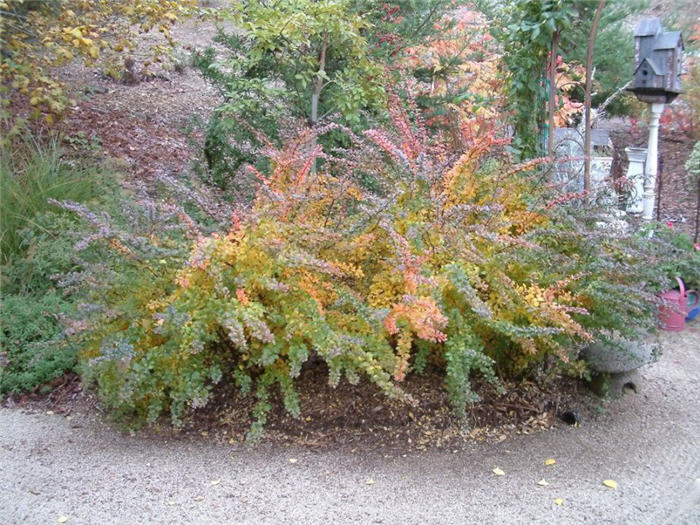| Botanical Name: Berberis thunbergii | |
| Common Name: Japanese Barberry |

-
Anatomy
-
Culture
-
Design
Plant Type
Shrub
Height Range
1-3', 3-6', 6-12'
Flower Color
Yellow
Flower Season
Spring
Leaf Color
Green, Purple, Red, White, Variegated
Bark Color
Brown, Red
Fruit Color
Orange, Red
Fruit Season
Fall
Sun
Full, Half
Water
Medium
Growth Rate
Moderate
Soil Type
Sandy, Clay, Loam, Rocky, Unparticular
Soil Condition
Average, Rich, Poor, Well-drained, Dry
Soil pH
Neutral, Basic
Adverse Factors
Thorns/Spines
Design Styles
English Cottage, Formal, Japanese, Mediterranean
Accenting Features
Unusual Foliage
Seasonal Interest
Summer, Fall
Location Uses
Background, Perennial Border, Shrub Border, Foundation, With Rocks
Special Uses
Hedge, Screen, Fire Resistant, Small Spaces
Attracts Wildlife
n/a
Information by: Stephanie Duer
Photographer: Linda Engstrom
Photographer: Linda Engstrom
-
Description
-
Notes
Japanese barberry is a deciduous shrub that is usually available as one of dozens of cultivars, all with some shared attributes, but each with its own character. All Japanese barberry have an upright, mounding to vase-shaped habit; small, oval to rounded leaves; bright red or orange torpedo-shaped little berries; and thorns. Leaf color varies with cultivar, as does fall color. Size also varieties, from little dwarfs under 2 feet tall to mounding shrubs 6 to 8 feet tall. Check the plant tag for details; depending on size, use in the front or backs of shrub borders. Avoid walkways and drives (remember those thorns). A great hedge plant (again, remember those thorns).
Grow in well drained soil in full sun; they will tolerate part shade, though purple-leafed forms may lose color intensity. Very adaptable to soil types and withstands dry soils; will not tolerate wet soils. Barberry is thorny, and as such, you don't really want to be needing to prune it, so place it where it will have the room it needs to grow. If you do need to control the size, prune selectively (see Guides).